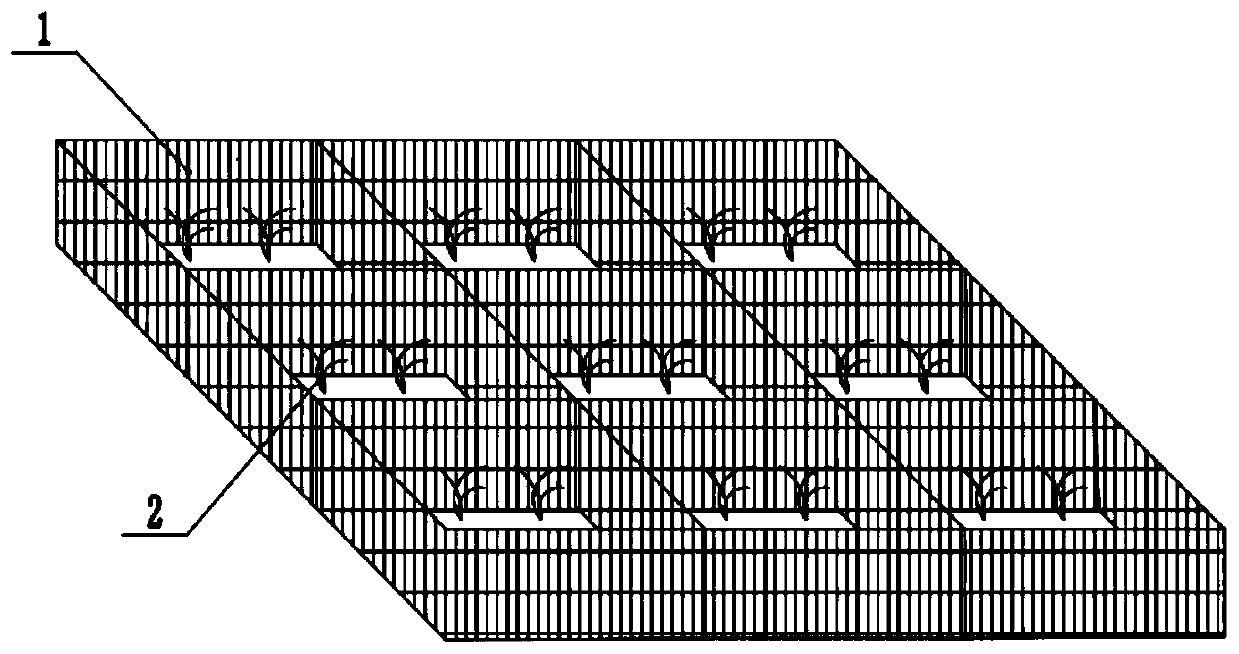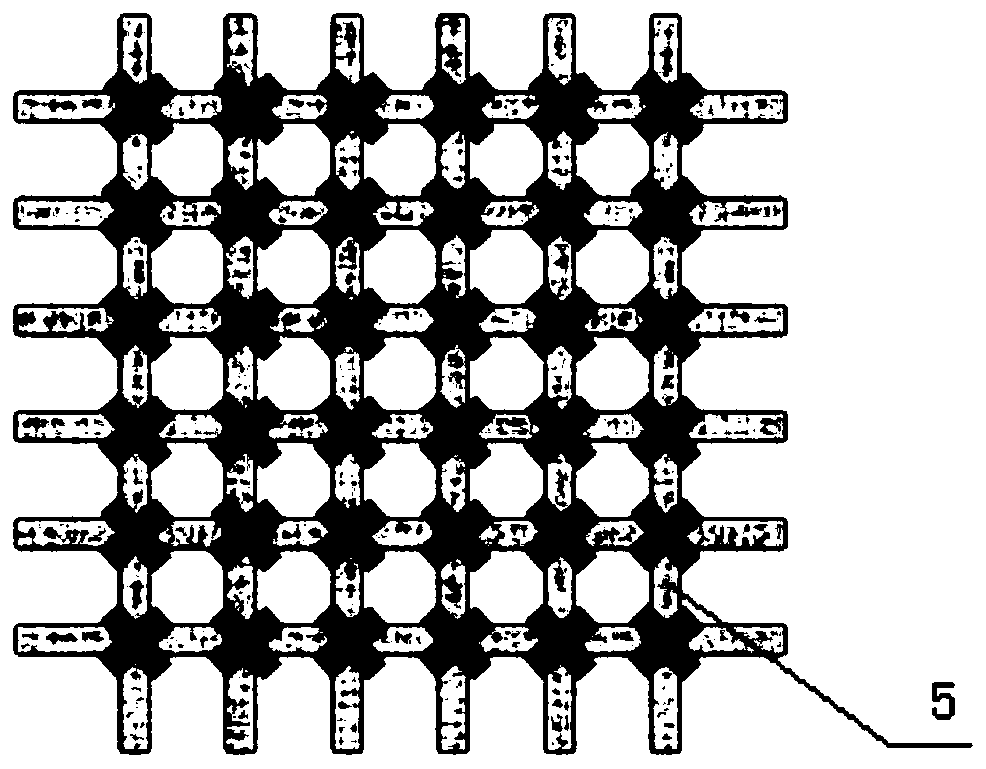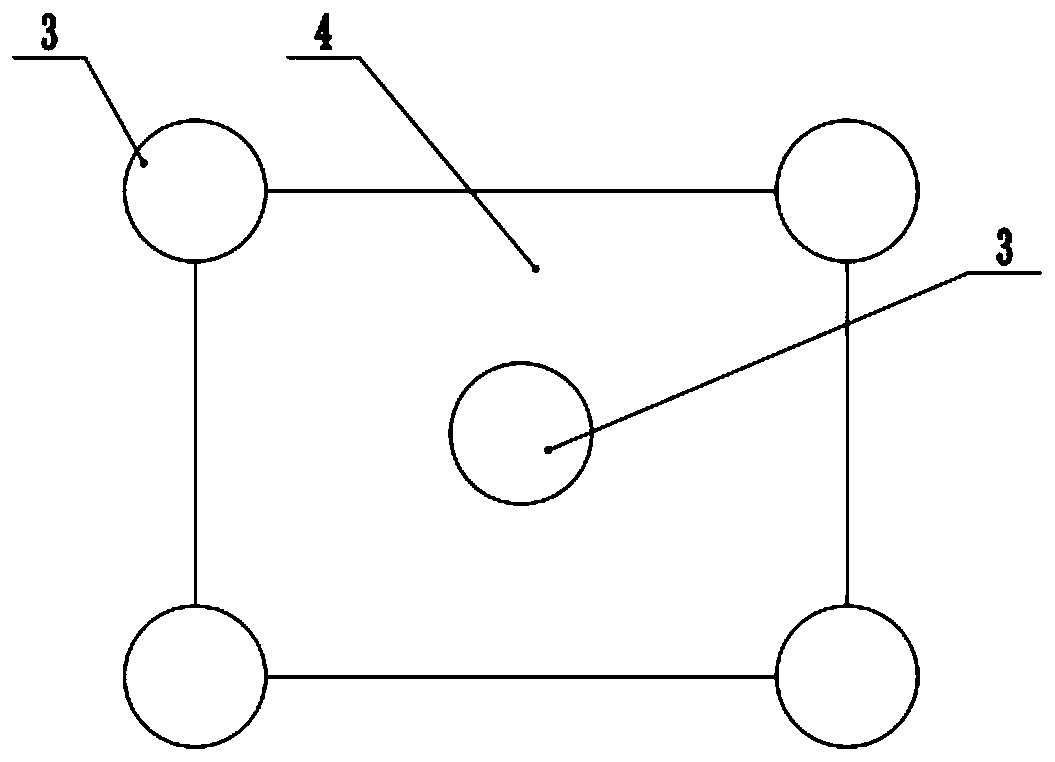Repair method of suaeda salsa in coastal wetlands
A technology of Suaeda salsa and a restoration method, which is applied in the field of restoration of Suaeda salsa in coastal wetlands, can solve the problems of insufficient upstream water, difficult to implement on a large scale, poor effect, etc., so as to improve biological connectivity and prevent sea ice. Erosion and improvement of living environment
- Summary
- Abstract
- Description
- Claims
- Application Information
AI Technical Summary
Problems solved by technology
Method used
Image
Examples
Embodiment 1
[0031] This embodiment provides a repair method for Suaeda saline in coastal wetlands. A grid is set on the coastal wetlands, and the grid is woven from wetland grasses; the grid is composed of several transverse dividing devices and The longitudinal dividing device is arranged vertically and intersecting. Several square grid units are formed inside the grid. The grid units are equipped with pit micro-terrains arranged in a quincunx shape to enhance the hydrological and biological connectivity of the restoration area. The grid is set in the bare spot area and the degraded area of the Suaeda salsa wetland in the intertidal zone. The laying time of the grid is from mid-November to mid-December every year. Suaeda salsa grows in the grid unit.
[0032] The grid of this embodiment is a shallow grid, such as figure 2 As shown, the shallow grid is spliced by several cylindrical or columnar grid strips 5, and the grid strips 5 form the horizontal division device and the vertica...
Embodiment 2
[0036]The difference between this embodiment and Embodiment 1 is that the shallow grid described in this embodiment is arranged on the middle tidal flat, and each grid unit in the middle tidal flat is 50-60cm long, 50-60cm wide, and the diameter of the grid bar is 5-8cm , In this embodiment, each grid unit is 55cm long, 53cm wide, and the grid bar has a diameter of 7cm. The wetland gramineous herbaceous plant is reed. The diameter of the middle tidal flat hole is 10-15cm, and the depth is 8-10cm. In this embodiment, the diameter of the tidal flat hole is 13cm, and the depth is 9cm.
Embodiment 3
[0038] The difference between this embodiment and Embodiment 1 is that the shallow grid described in this embodiment is arranged on the low tidal flat, each grid unit is 25-35cm long, 25-35cm wide, and the grid bar diameter is 3-5cm. In the embodiment, each grid unit has a length of 35 cm, a width of 25 cm, and a grid bar diameter of 4 cm. In the present embodiment, the diameter of the low-tide beach pothole is 5 cm, and the depth is 5 cm. The wetland gramineous herbaceous plant is Spartina alterniflora. Compared with reed plants, Spartina alterniflora has a higher degree of lignification, stronger toughness, salt and flood resistance, and resistance to wind and waves. Its manifestations are: ⑴ destroying the habitat of offshore organisms and affecting tidal flat farming; ⑵ blocking waterways and affecting ships leaving the port; ⑶ affecting seawater exchange capacity, leading to a decline in water quality and inducing red tides; ⑷ threatening the local coastal ecosystem, r...
PUM
 Login to View More
Login to View More Abstract
Description
Claims
Application Information
 Login to View More
Login to View More - R&D
- Intellectual Property
- Life Sciences
- Materials
- Tech Scout
- Unparalleled Data Quality
- Higher Quality Content
- 60% Fewer Hallucinations
Browse by: Latest US Patents, China's latest patents, Technical Efficacy Thesaurus, Application Domain, Technology Topic, Popular Technical Reports.
© 2025 PatSnap. All rights reserved.Legal|Privacy policy|Modern Slavery Act Transparency Statement|Sitemap|About US| Contact US: help@patsnap.com



